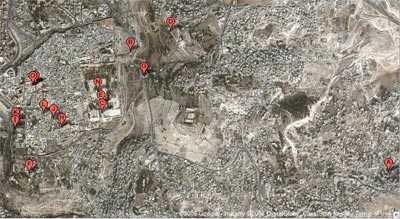“Hermeneutic: Key to Understanding Scripture” by Charles Cooper
Hermeneutics
There are different reasons why many individuals change their view to either preterism or amillennialism, and in most cases, both. In their mind, it is just easier to regulate the events in Matthew 24 or Revelation to the 1st century and be done with it and move onto something else. Or, for many, they feel more pious to view Revelation as mostly teaching spiritual truths (e.g. the Antichrist is not a literal future historical figure but is symbolic and represents “the principle of evil.”)
And lest we forget, in my opinion, one of the key reasons why individuals embrace these views. Their favorite theologians are right on when it comes to the nature of God, humanity, and salvation–so “they must be right when it comes to eschatology.”
And given that it is demonstrable that amillennialism is a human creation that developed out of the nascent Roman Catholic church, the premiller has the confidence to know that the early church in a singular voice affirmed a premill position. And that same level of confidence can be displayed in the Biblical arguments as well.
The reason I want to start this continuous nugget series on premillennialism is so I can equip many of you with the best arguments for premillennialism against their best arguments.
I do not want you to be intimidated by their arguments, and certainly not intimidated by their terms they invoke. You will often hear an amill brother or sister say, “We use a ‘God-centered’ hermeneutic when interpreting the Bible.” Or “Christ-centered” hermeneutic. The suggestion is that you are not God-centered–and who wants to be against that!
Another term they use is “Biblical-Theology” hermeneutic. As if premillennialism is not based on a Biblical-Theological hermeneutic.
In reality, when it comes to key texts such as Revelation 20, Acts 15, Romans 11, Matthew 24, Luke 21, and various O.T. passages, their hermeneutic is inconsistent in practice.
Though for the rest of the year I will be working on the Thessalonian series, I will punctuate blog posts with this ongoing series defending premillennialism and equipping you with solid arguments against amillennialism.
As far as the preterist view and interacting with that position, after I am finished with the Thessalonian series, I will commence with an Olivet Discourse series that will indeed last for at least two years. This is where I will interact with the best that the preterist view has to offer, not merely giving asides, but full-length discussions and critiques against the preterist position.
Every so often I come across some helpful and interesting Bible study tools on the Web that I share with you. Here are some recent ones I found.
“Bible Mapper is a fully interactive, highly accurate Bible mapping system that helps you quickly and easily create customized maps of the Holy Lands or study a particular period and aspect of Bible history.”
Interactive modern and historical Map of Israel.
Here is a radical (and conducive) way of approaching your Bible that does away with modern mechanical intrusions such as versification, footnotes, etc. (Though there are some valid criticisms of it).
Here is a Jerusalem city model in the time of Jesus.

